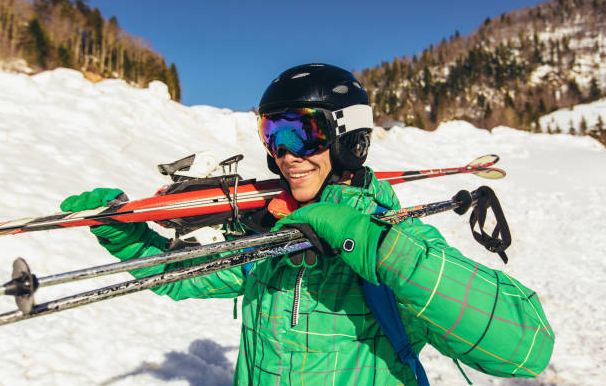One of the biggest problems that skiers face is the possibility of hypothermia. This can easily be prevented by dressing properly for the sport of skiing.
You may think that wearing a bunch of bulky winter clothes will hinder your performance on the slopes, but it doesn’t unless you are racing.
If you are in a race, the chances are good that there will be plenty of people around in case of an accident or emergency but if you are not racing, and you set out for a day of enjoyable cross country or downhill skiing, you could easily find yourself all alone, and very cold!
First, dress in layers, with the outer layer being as waterproof as possible. With the physical activity of skiing, you may become a little too warm, but you can shed layers as needed but don’t leave those layers behind! Put them in a backpack, or tie them around your waist.
Make sure that you wear a knit cap that will cover your ears and face. You can always pull it up where it is still covering your head and ears, but you will have that face protection if you need it.
If you wear a ski helmet, get a liner that will cover your head, ears, and face as well. Also wear a thick scarf around your neck.
Not only will this protect your neck from the cold, it will aid in keeping you from getting sick with a sore throat. Choose a scarf that can also wrap around your head in case it is needed.
Make sure that you wear gloves or mittens to protect your hands from the cold. If possible, use waterproof gloves or mittens.
If not, carry an extra pair in your backpack, pocket, or fanny pack. When your gloves or mittens become wet, make sure you replace them with dry ones to avoid frostbite.
Wear thick socks, such as ski socks. If you don’t have ski socks, wear two pairs of regular socks or wool socks. Again, carry an extra pair or two with you, and change them if they become wet.
With your head, hands, and feet protected, you now need to cover the torso and legs. Starting with the inner layer, wear long thermal underwear on your legs and torso. Avoid wearing jeans.
Instead, wear sweat pants or lycra pants, and over that, you should wear waterproof ski pants.
Over your thermal underwear top, you need a t-shirt, followed by a fleece shirt, followed by a thick sweater, followed by a waterproof ski jacket.
When it comes to dressing for the elements, there is no such thing as putting on too many layers of clothing. The more you can put on, the safer you will be.
Frostbite and hypothermia are very serious conditions that you must guard against. When dressing, consider the possibility that you may get injured or lost on a very lonely trail and have to spend a night or two out in the cold! If you’ve dressed in layers, your chances of survival are much greater.

